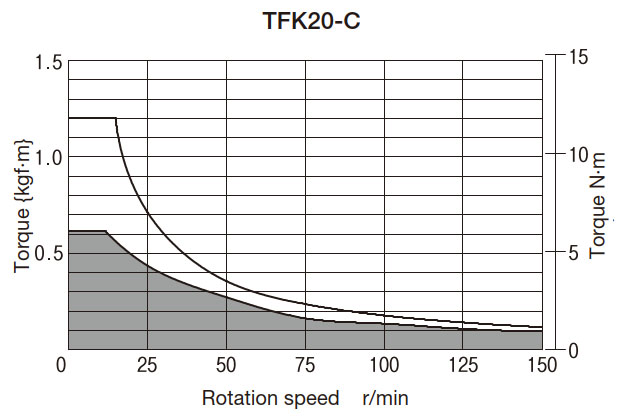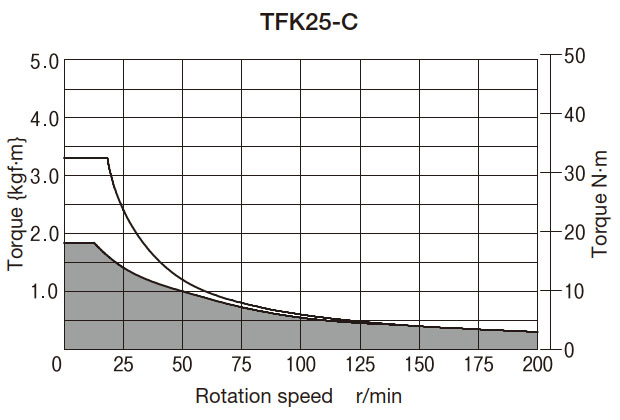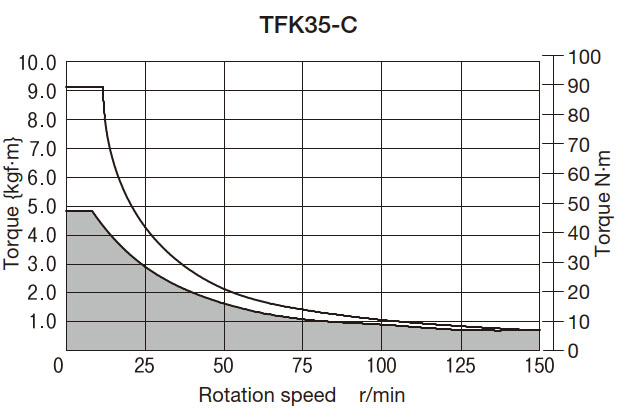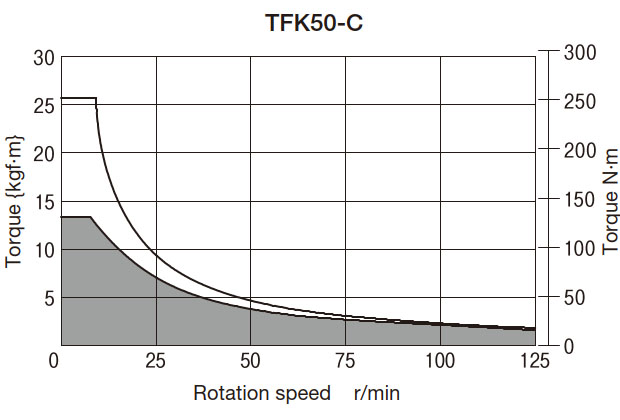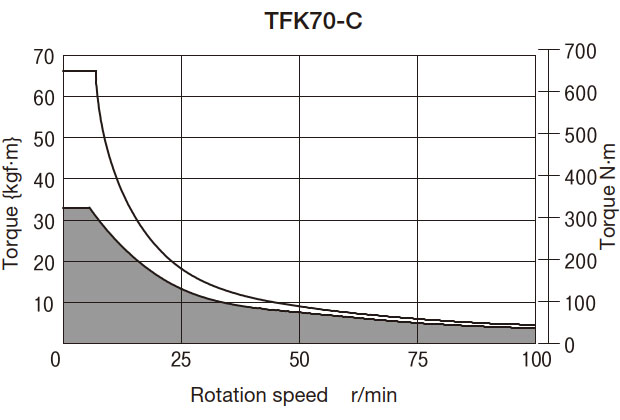Technical Data Mechanical protectors Selection
To view selection procedures and precautions, please proceed to the following.
Click here to narrow down the product series or to make a tentative selection.
Torque Keeper TFK Selection
If using the Torque Keeper with human transportation or lifting devices, take the necessary precautions with equipment to avoid serious injury or death from falling objects.
- 1. Decide the conditions from the table below in accordance with your application (see page 91). Determine the size from the T–N curves on the page bottom.
Purpose of use Usage conditions Determine a size Accumulation Determine the following for the Torque Keeper of each conveyor. - (1) Slip torque
- (2) Slip rpm
- (3) Slip time (conveyor stop time)
- (4) Connection time (conveyor drive time)
- (5) Operating time per day
Determine a size for which the slipping torque and rpm are within the allowable range (below the curve) on the T–N curve.
If the slip time is longer than the connection time, and the operating time per day exceeds eight hours, it is recommended to operate within the dark gray area of the T–N curve.
Braking Determine the following for the Torque Keeper of each machine. - (1) Braking torque
- (2) Speed
- (3) Slip time (brake operating time)
- (4) Connection time (time when brake not operated)
- (5) Operating time per day
Items 3. and 4. are not necessary in case of continuous slipping.
Determine a size for which the brake torque and rpm are within the allowable range (below the curve) on the T–N curve.
If the slip time is longer than the connection time, and the operating time per day exceeds eight hours, it is recommended to operate within the dark gray area of the T–N curve.
Dragging Determine the following for the Torque Keeper of each machine. - (1) Slip torque
- (2) Slip rpm
- (3) Slip time
- (4) Connection time
- (5) Operating time per day
Determine a size for which the slipping torque and rpm are within the allowable range (below the curve) on the T–N curve.
If the slip time is longer than the connection time, and the operating time per day exceeds eight hours, it is recommended to operate within the dark gray area of the T–N curve.
- 2. Verify that the shaft bore range of the chosen Torque Keeper conforms with the shaft diameter to beinstalled.
- 3. Setting the slip torque
Each Torque Keeper is set at a value that is 50% of the maximum torque range (see product pages). The torque curve is included with the unit when it is shipped.
This 50% torque is called the “zero point” and it is the basis for setting the slipping torque.
See “Handling Part 2” (click here) for details.
Notes on Selection
- 1. Do not allow water or oil to get onto the friction surface. This will cause the torque to drop and unstable slip torque will result.
- 2. The T–N curve is intended for use when the ambient temperature is less than 40°C. Contact a Tsubaki representative if the ambient temperature is higher.
- 3. Please contact Tsubaki representatives when the slip torque for the shaft diameter to be used is smaller than the setting torque range of theTorque Keeper.
- 4. When the direction of rotation is reversed, it will cause backlash. The Torque Keeper is not suitable for applications where backlash is not permitted.
T-N curve graph { } is for reference.
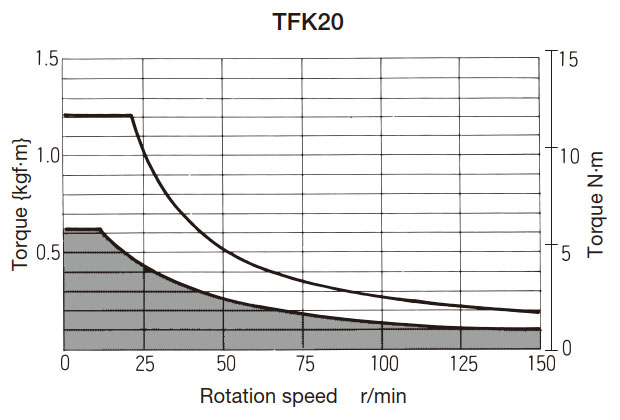
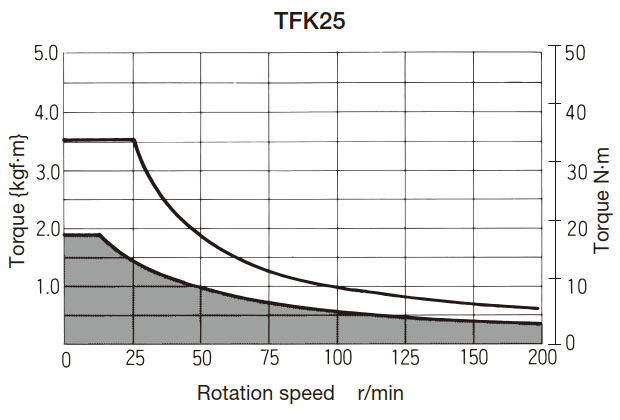
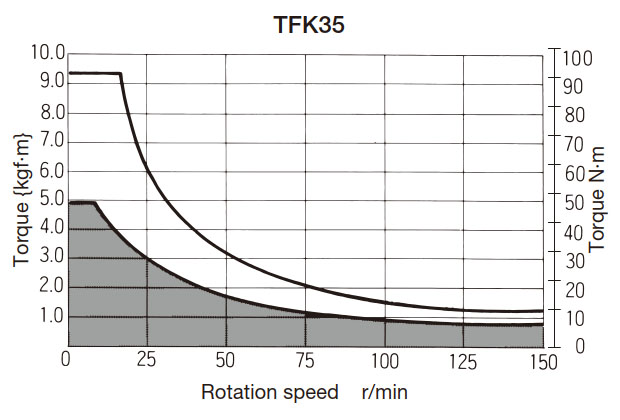
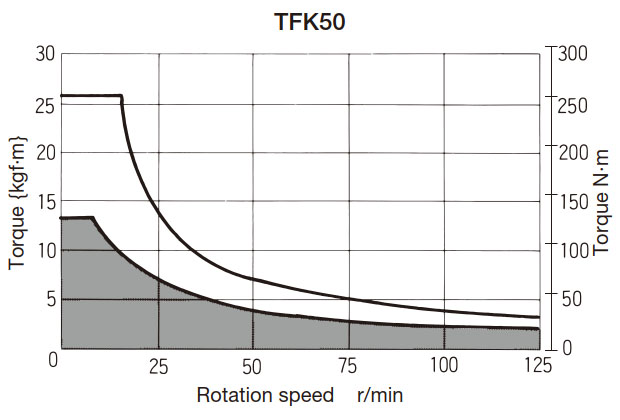
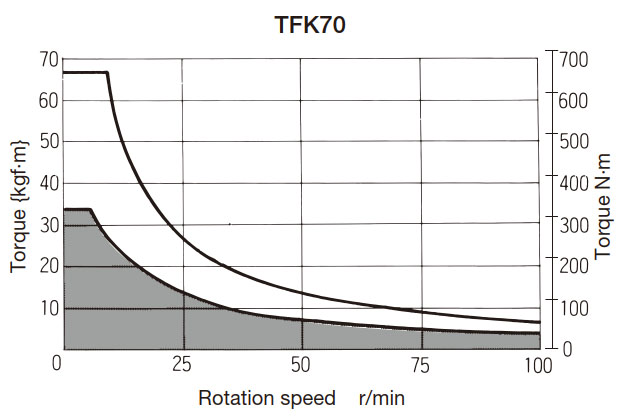
Note) T–N curves are based on the Torque Keeper’s allowable temperature.
For more stable slipping torque, it is recommended to operate within the dark gray area of the T–N curve.
However, be aware that when the speed is 30 r/min or less, a stick-slip phenomenon may occur, which will cause unstable torque.
A stick-slip phenomenon is a phenomenon in which a friction surface slips and stops repeatedly.
